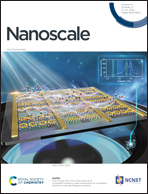Molecular homogeneity of GB1 revealed by single molecule force spectroscopy
Abstract
In single molecule studies, the ergodic hypothesis is inherently assumed, which states that the time average of a physical quantity of a single member of an ensemble is the same as the average of the same quantity on the whole ensemble at a given time. This hypothesis implies the homogeneity of a molecular ensemble of a system of interest. However, it is difficult to test the validity of the ergodic hypothesis experimentally. Recent theoretical work suggested that heterogeneity may be widely present in single molecule force spectroscopy studies. Here we used atomic force microscope based single molecule force spectroscopy to examine the molecular homogeneity/heterogeneity of a small globular protein GB1 in its mechanical unfolding reaction. Using a polyprotein (GB1)4, we directly measured the ensemble average and time average for a single molecule of the mechanical unfolding force and kinetic parameters that characterize the mechanical unfolding free energy profile of GB1. Our results showed that the ensemble averages of these physical quantities are indeed the same as the time averages for single molecules, and individual molecules did not show any differences amongst them in these physical quantities. These results are consistent with the expectation of the ergodic hypothesis and indicate that GB1 is a homogeneous molecular ensemble in its mechanical unfolding reaction on the time scale of our force spectroscopy experiments.



 Please wait while we load your content...
Please wait while we load your content...